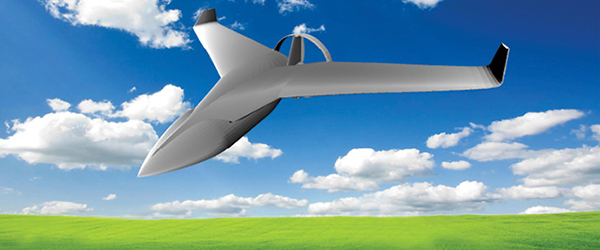The Real World Design Challenge is Helping to Build the U.S. Stem Workforce
Student Design Competition Profile: The Real-World Design Challenge

The 2018 RWDC was centered around the design of an unmanned aircraft for precision agriculture. Image courtesy of RWDC.
Latest News
July 1, 2019
The Real World Design Challenge (RWDC), which began in 2008, readies participants for employment in science, technology, engineering and mathematics (STEM) fields. The RWDC was created to help build the U.S. STEM workforce with a focus on aerospace and defense. The RWDC is identifying and preparing some of the best STEM talent across the United States.
Dr. Ralph K. Coppola is the president of RKC International and founder of Real World Design Challenge, associated with the Embry-Riddle Aeronautical University Worldwide in Daytona Beach, FL. We spoke to him to learn more about the competition.
Digital Engineering: Can you provide an overview of the Real World Design Challenge competition?
Dr. Ralph Coppola: Through a rigorous academic program and judging process, the RWDC is building a pipeline of the “best and brightest” students that will become STEM professionals.
The RWDC supports STEM education in high schools through an annual competition that provides students with the opportunity to apply the lessons of the classroom to the technical problems currently faced in the engineering field; the academic goal of the RWDC is to motivate and prepare students for the STEM workforce and teach innovation.
With training and support by mentors, students learn the technical elements of aircraft design. Through their participation in RWDC each year, students develop STEM and business skills through work on an engineering problem.
DE: What’s behind the title “Real World Design Competition”?
Coppola:The research that impacted the design of RWDC included the finding that industry wanted STEM employees that possess an excellent academic background and 7 to 10 years of “real world” experience. The name “Real World Design Challenge: The Innovation Engine” was chosen based on the research and the goals set for the program. When industry leaders were asked, “what do you want in the workforce?” they responded that they wanted people with “excellent academic preparation” and 7 to 10 years of “real world experience.”
When industry leaders were asked if it was possible provide the “real world” experience to the students at the education level, they responded in the affirmative. So one of the program goals was to design a program that provided “real world” experience at the education level. If this goal could be accomplished, it would be possible to cut almost 10 years off the STEM pipeline.
You cannot teach engineering without teaching the engineering design process. That is why the word “design” is in the name of the program. In order to have students rise to higher levels of achievement, it was necessary to challenge the students with an academically rigorous problem and have them compete to come up with the best solution. Thus, the word “challenge” was included in the name of the program. Another program goal was to develop the next generation of innovators by design. Today, innovation has happened in society by chance. People like Bill Gates and Steve Jobs emerged as examples of people that have had a significant impact on society. Innovation drives the creation of wealth in society. The RWDC was developed to create innovators by design thus increasing the number of innovators. That is why the tag line “Innovation Engine” was included.
DE: What was the goal behind the 2018 Challenge?
Coppola: For the 2018 Challenge, design unmanned aircraft systems (UAS), create a theory of operation and develop a business plan for the commercial operations of the system, are based on the following scenario:
Your company has been tasked with making a case whether or not the Federal Aviation Association (FAA) part 107 regulations are restricting the ability to improve crop yield while minimizing profits. You will be comparing your aircraft to two aircraft that do precision agriculture in the U.S.
The UAS design should perform spraying and/or surveying better than one or both of the aircrafts given. While you may choose to have capabilities of both UAS designs given in your design, you must do better than the DJI Agras MG-1 at spraying, do better than the eBee SQ at surveying or do better at both.
To demonstrate the aircraft’s abilities, you will be using the test field owned by your company. The field is 2 by 2 miles in size (2,560 acres) and the crop is corn. It will also be assumed that you must provide your surveying and spraying as a service to the farmer; you may not say your business case is to sell the aircraft.
If you decide that your UAV will only take care of one of the two features done by the DJI Agras MG-1 (spraying) or the eBee SQ (surveying), you will need to come up with a way of completing those tasks through traditional methods. For example, if you make a surveying UAV that is unable to do any spraying, you will need to research another method of getting the pesticide to the affected areas.
The cost of performing the additional tasks that your UAV design does not complete must be accounted for in your costs for servicing the field. You must, however, have at least one UAV that completes the survey and/or spraying tasks of the DJI Agras MG-1 or the eBee SQ.
Subscribe to our FREE magazine, FREE email newsletters or both!
Latest News
About the Author
Jim Romeo is a freelance writer based in Chesapeake, VA. Send e-mail about this article to [email protected].
Follow DE





